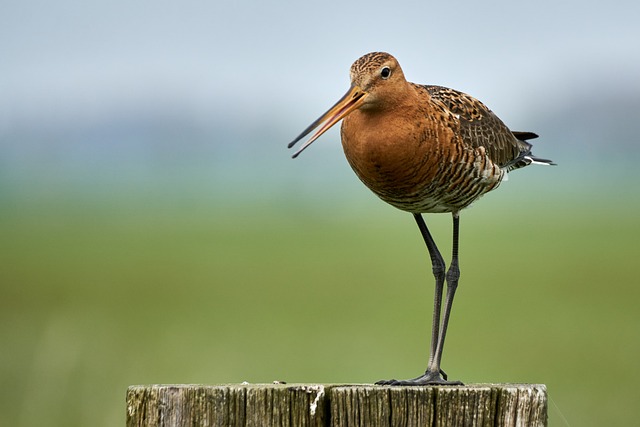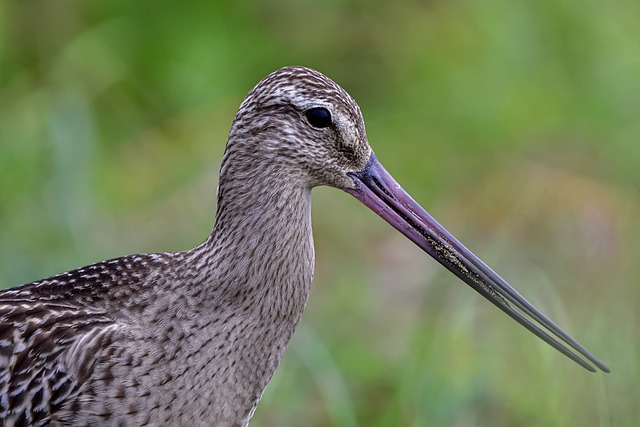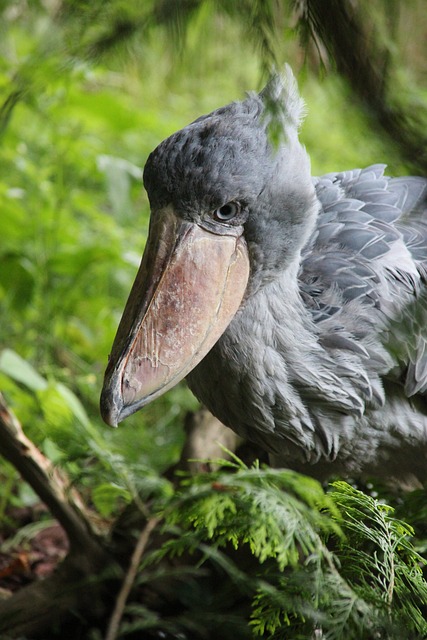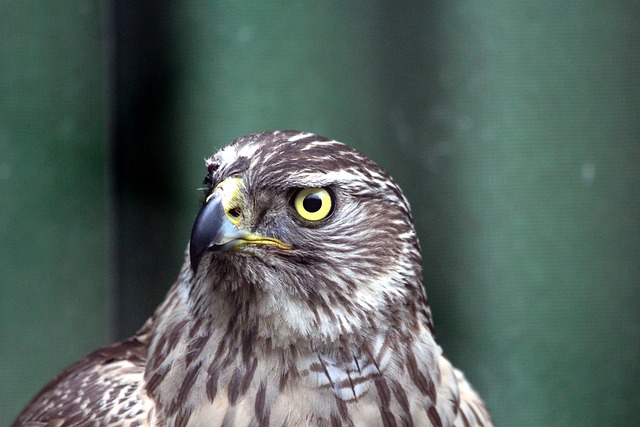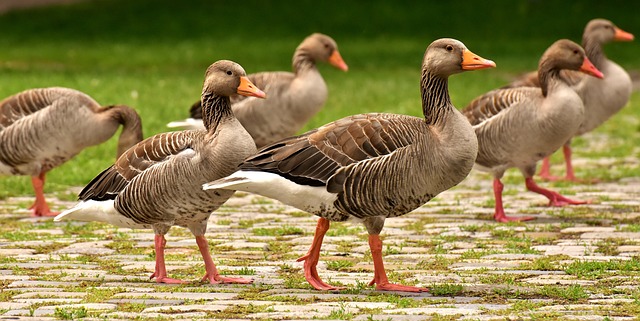The common whimbrel, or Numenius phaeopus, is a fascinating bird that may be small but packs a lot of personality and character. This shorebird is a wading bird species that can be found in wetlands both in the Northern and Southern Hemispheres.
Common whimbrels have a unique appearance and behaviour that sets them apart from other shorebirds. They are important to the environment and the protection of their species is essential for maintaining healthy ecosystems.
Introduction
Common whimbrels are small to medium-sized shorebirds that can be found in a variety of habitats. They prefer wetland areas such as marshes, estuaries, and mudflats but can also be found in grasslands and coastal areas. Common whimbrels are usually found in groups and can be seen foraging on the ground for food.
Their distinguishing feature is their bill, which is curved and long and allows them to probe in the mud for food. Common whimbrels have a brownish-grey plumage with white spots and streaky lines on their wings and backs. They also have a long neck and legs and a small head with bright eyes.
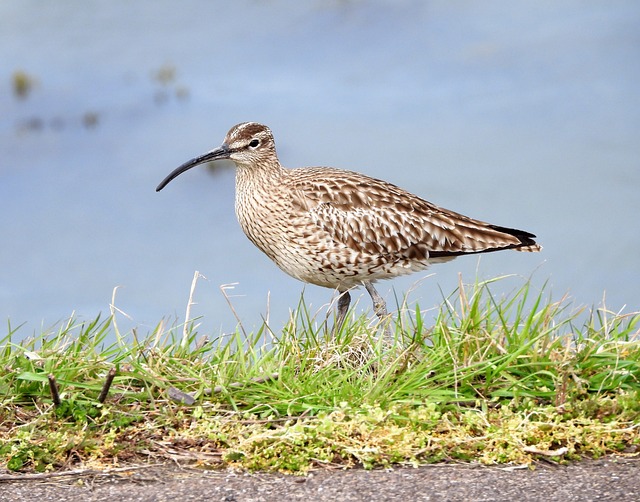
Common whimbrels are migratory birds and can travel up to 11,000 km during their annual migration. They usually migrate to the northern hemisphere in spring and summer and the southern hemisphere in autumn and winter. Along their migration route, they stop in wetlands and coastal areas to rest and forage for food.
Common whimbrels feed on a variety of items, from invertebrates such as worms and mollusks to small fish and crustaceans. They also feed on terrestrial insects and grasses. Their diet is important for maintaining healthy ecosystems as it helps to maintain the balance between prey and predators.
Common whimbrels breed during the spring and summer months. Their nesting sites are usually located in wetlands, marshes, and estuaries. Common whimbrels build their nests on the ground, usually in shallow depressions. The female lays her eggs in the nest and the male helps to incubate them. The incubation period is usually 22-24 days and the chicks usually fledge after 40-45 days.
Common whimbrels are social birds and can be seen in flocks of up to a hundred birds. They are also known to migrate in large flocks and are often seen in large flocks near the coast. They have an interesting defensive behaviour and when threatened, they will spread their wings and run away.
In conclusion, the common whimbrel is an important bird species that is essential for maintaining healthy ecosystems. They have an interesting appearance and behaviour that sets them apart from other shorebirds. It is important to protect common whimbrels and their habitat in order to ensure their survival.
Physical Characteristics
The common whimbrel (Numenius phaeopus) is a wading bird with a distinctively large, curved bill. Depending on the sex and age, these birds can range from 17 to 20 inches in length, with a wingspan of up to three feet. Adult common whimbrel typically weigh between 10 and 18 ounces.
When it comes to coloration and plumage, the common whimbrel has a distinctive patterning. The head and neck are dark brown, with streaks of white on the underparts. Its back and wings are a mixture of brown, grey, and white, while the tail is typically a darker brown with white edges. The bill is a striking yellowish-orange color, with a black tip.
One of the most distinctive features of the common whimbrel are its legs. Unlike other wading birds, which typically have long, thin legs, the common whimbrel has a short, stocky set of legs. This unique feature is believed to be an adaptation to the species' primary method of feeding—wading through shallow waters and stirring up food with its feet.
The common whimbrel also has a distinctive call, which is often described as a loud, whistling “kloo-eep”. This call can often be heard during the breeding season, when the birds use it to advertise their presence.
Overall, the common whimbrel is a unique species, with a variety of physical characteristics that make it stand out from other wading birds. From its short, stocky legs to its bright yellow and black bill, the common whimbrel is sure to catch the eye of any bird-lover.
Lifespan
The common whimbrel is a migratory bird that is known for its long lifespan, with some individuals living up to 20 years or more. They are usually found in coastal habitats, particularly in areas that are near the sea.
The average lifespan of a common whimbrel is between 14 and 20 years, but it is possible for some birds to live longer than that. In the wild, some birds have been known to live up to 25 years. The longest-lived whimbrel in captivity was a female specimen who lived for 38 years.
The life expectancy of a common whimbrel can vary depending on the bird's environment and conditions. Generally speaking, these birds are more likely to live longer in areas with a more favorable climate and fewer predators. The availability of food sources in the area also plays a big role in their lifespan.
The age of a common whimbrel can be determined by examining its plumage. There are several age-related changes to the plumage of a whimbrel that can be used to identify the age of a bird. Adults usually have a darker brown color on their back, wings, and tail. Juveniles have a more mottled coloration and are usually paler in color.
Whimbrels reach maturity at around 4-5 years of age. After reaching maturity, they are capable of breeding and laying eggs. The breeding season for common whimbrels usually lasts from April to June, and they lay their eggs in May or June. The eggs take about 23-25 days to incubate and it takes around 10 weeks for the chicks to fledge.
The common whimbrel is an important species of migratory bird and a key indicator of coastal health. It is important to protect these birds and their habitats in order to ensure their long-term survival. By protecting these birds and their habitats, we can ensure that these birds will continue to thrive and live long lives.
Diet
When it comes to what they eat, common whimbrels are quite flexible. They mostly feed on small aquatic invertebrates such as amphipods, molluscs, crabs, snails, insects, and worms. They will also feed on small vertebrates such as fish, frogs, lizards and small rodents. They can also be seen foraging for berries, nuts, and other plant matter.
Common whimbrels tend to forage in shallow waters, mudflats, and along the shoreline. They use their long, down-curved bills to probe for food in the substrate. They will also pick up food from the surface of the water. Their diet is made up of a variety of prey items depending upon the season and availability.
The impact of their diet on their habitat is significant. Their foraging habits can contribute to the destruction of the environment in which they live. For example, their digging and probing can cause erosion and destruction of mudflats and other ecosystems.
Their preferred food sources are mostly aquatic animals, but they are also known to eat plant matter. Some of their favorites are sea urchins, sea cucumbers, crabs, shrimp, small fish, and worms. They will also eat nuts, berries, and other fruits if available.
Common whimbrels will often feed in large flocks. They fly close to the surface of the water searching for prey, and they have been known to harass larger birds such as terns, gulls, and egrets in order to force them to drop their prey. They have also been observed stealing food from other birds.
Breeding
The common whimbrel is a migratory shorebird species, breeding in Arctic tundra regions from Alaska to Greenland, and wintering in coastal areas of Central and South America. Their typical breeding season is short, typically from mid-May to July.
During this time they typically nest in solitary or pairs on open ground, rarely higher than several meters above sea level. The female lays a clutch of 3 to 4 eggs which are incubated by both parents for a period of 21 to 22 days. Depending on the availability of food, eggs might be abandoned or left alone for a period of time.
Once hatched, the chicks are covered in down and develop quickly, with the adults providing them with food. After 30 days, the chicks are ready to fledge, and will begin to make short flights away from the nest. During their first year they will be dependent on the parents for food.
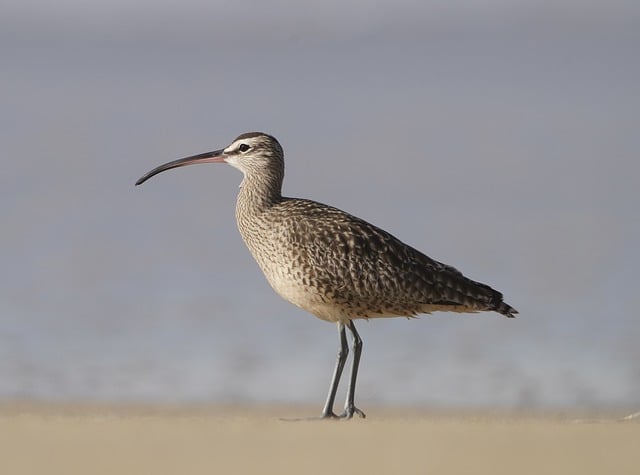
To attract a mate, the male common whimbrel performs an elaborate courtship display, including a variety of calls and movements. The display consists of running, bowing, and spreading its wings to display its white wingbars, while it also creates vocalizations such as a loud “krick”, and a song-like “kree-dree-dree”. The male will also perform a “head-bob” display, where it bobs its head up and down, to attract the female’s attention.
Once a pair has formed, the two will typically remain together for the duration of the breeding season. Monogamy is rare, and multiple-female nesting is common. Additionally, the young will often remain with the adults throughout the winter months, and might even remain with the same partner until they are ready to breed.
The common whimbrel is an important part of the Arctic tundra ecosystem, and its presence helps to keep the area healthy and productive. Therefore, it is important to protect these birds from habitat destruction, hunting, and other human-related pressures, in order to ensure their continued presence.
Behaviour
When it comes to the behaviour of the Common Whimbrel, several key points stand out. To begin, they are quite social, often gathering in large flocks of up to 50 or more individuals. During the winter months, these flocks gather in lowland coastal wetlands, where they can find ample food sources. During the breeding season, they are much more solitary and spend most of their time in small pairs.
Migration and seasonal habits are also important to note. The Common Whimbrel is a migratory species, with many birds spending the winter in tropical regions, such as the Caribbean and South America. During the summer, they arrive in Northern regions and can be found in parts of Europe, North Africa, and Canada.
When it comes to defensive behaviour, the Common Whimbrel is quite timid and will usually flee or hide when threatened. However, if cornered, it will defend itself with loud vocalizations and wing flapping. If a predator persists, the bird will attack with its bill, as it is quite a strong weapon.
The Common Whimbrel is often seen flying low over the surface of the water. This behaviour is called “piping” and is used to flush out prey, such as small fish, frogs, and crustaceans. The bird will also use the same technique to search for food along the shoreline.
The Common Whimbrel also engages in a behaviour known as “creaking”. This is a courtship ritual in which the male will make a series of loud, repetitive calls, usually in the morning or early evening hours. This behaviour is used to attract mates and to establish a nesting territory.
Finally, the Common Whimbrel is a fairly vocal bird. In addition to its courtship call, it emits a variety of other notes, including a series of high-pitched whistles and a low-pitched croak. These sounds are used to communicate with other birds and to alert them to potential threats.

